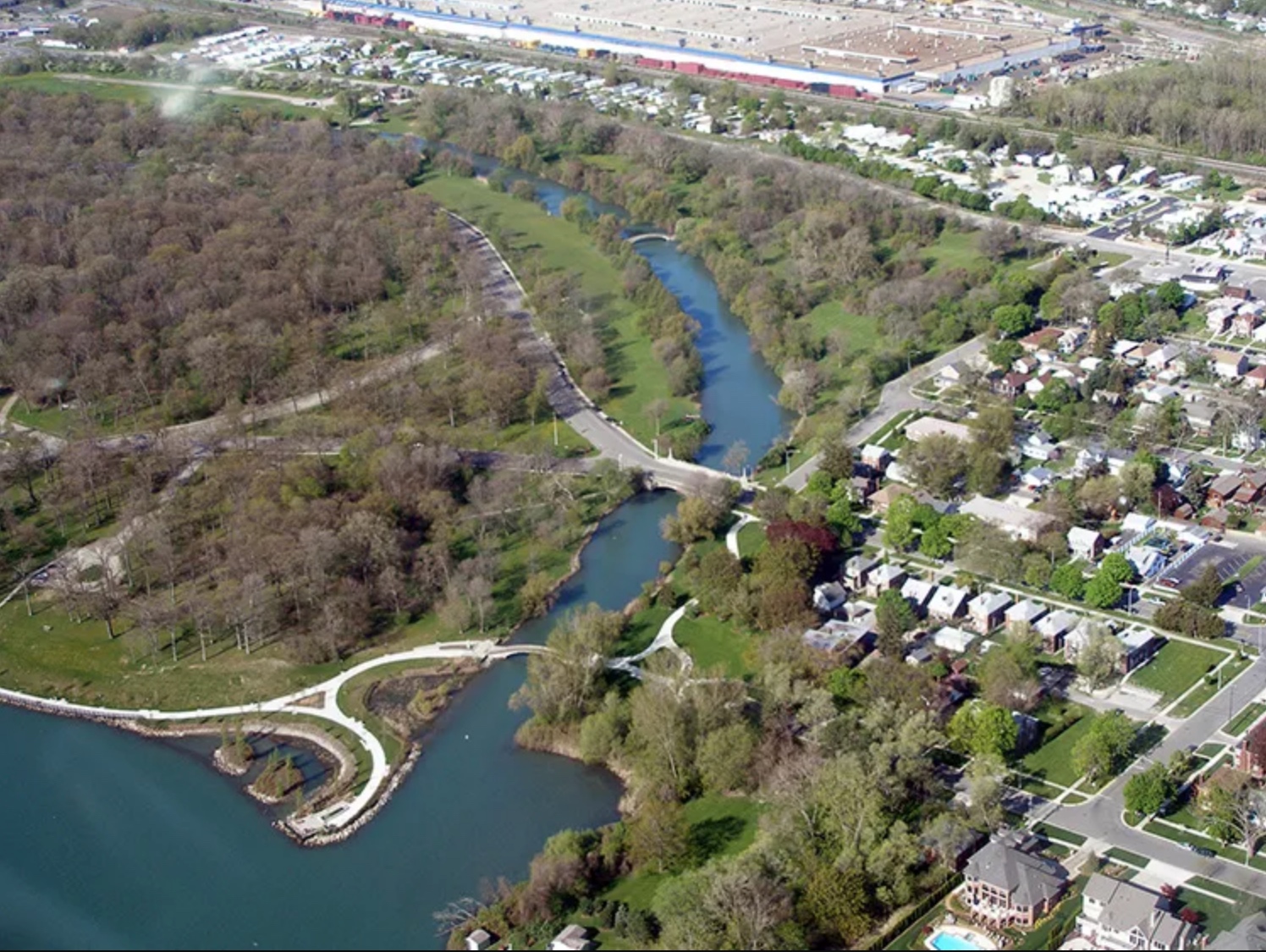Friends of the Rouge Helps Restore the River and the Community
Gallery

As a Henry Ford College student, the Rouge River is extremely close to home. Kingfisher Bluff, which houses the river, rests along the southern border of the college campus. According to HFC’s website, the bluff was constructed to combat pollution, conserve the natural habitat, reduce water levels and increase recreational activity in the area. Collaborating with the Clean Michigan Initiative and Wayne County, Friends of the Rouge has been working to restore the river for almost four decades. The organization has prioritized the community to educate residents and increase access to green spaces and waterways.
Friends of the Rouge was founded in 1986 in response to the highly polluted Rouge River. The EPA had designated it as an “Area of Concern,” which opened up funding to address major impairments. Originally, Friends of the Rouge coordinated volunteer cleanups through a program called Rouge Rescue. Over time, the organization expanded to restoring, protecting, and enhancing the entire watershed.
A watershed is an area where all the water drains into a common body like a river, lake, or ocean. The Rouge watershed spans 467 square miles, across 48 communities in Wayne, Oakland, and Washtenaw counties. All water in the Rouge ultimately drains into the Detroit River, and then into Lake Erie. It’s the most urbanized watershed in Michigan, and one of the most urbanized in the country.
Ashley Flintoff, executive director of Friends of the Rouge, explained, “Being highly urbanized, the Rouge watershed has lots of hard, non-permeable surfaces like roads and rooftops. This leads to polluted runoff, major flooding issues, and degraded water quality. All the chemicals, oils, salts, and debris on hard surfaces wash directly into the river during rain events.”
Flintoff was hired as the executive director last summer. She has degrees in architecture, community development, and urban planning. Previously, Flintoff worked as the director of planning at Wayne State University. She said she found out that Friends of the Rouge was looking for a new executive director while researching rain gardens for her yard.
According to Flintoff, Friends of the Rouge is involved in several initiatives. Restoration projects include installing rain gardens, pollinator gardens, and green stormwater infrastructure to absorb runoff. Workforce training involves teaching community members how to build and maintain green infrastructure through the Detroit Stormwater Specialist Program. Ecosystem monitoring offers training community members to track species like fish, frogs, and bugs to understand river health. Water quality testing helps with monitoring E. coli, PFAS “forever chemicals,” salt, microplastics and other potentially harmful contaminants in the river.
According to Flintofff, the river’s health “impacts public health, safety, and economics.” Fintoff added, “Access to nature improves mental and physical well-being. Lack of green space can create “heat islands,” that make areas hotter and increase energy bills for impacted residents. Poor stormwater management leads to flooding, which can cause costly home damage. Pollutants like road salt and microplastics eventually end up in drinking water sources, affecting human health. More green infrastructure means cooler, healthier, and more livable neighborhoods.”
For Flintoff, community engagement is “the core of everything we do. Our secret sauce.” She said the organization is not just focused on saving the river, “it’s empowering people to access and advocate for it. Many communities have been systemically cut off from the river due to industrialization and discriminatory practices like redlining. We work with groups like Detroit Indigenous People’s Alliance, Black to the Land, Queer Outdoors and more. We believe it’s essential that people not only reconnect with the river but have the information and tools to advocate for its health.”
Flintoff explains how Friends of the Rouge depends on community input. She said, “Folks deserve to be able to have the data and have the information, and have the power to speak up to their elected officials, to their neighborhood, t to whomever and say, ‘Hey, something’s not right here.’”
Friends of the Rouge offers other ways of community engagement, including rain garden training for homeowners and municipalities, kayaking trips along the lower Rouge in partnership with groups like Detroit Bird Alliance, Queer Outdoors, Black to the Land, and others.
Friends of the Rouge does outreach by taking kayaks and educational models to health fairs, farmers’ markets, and public events to spark curiosity and conversation.
Among their larger projects, Friends of the Rouge is developing a 29-mile Lower Rouge Water Trail, from Canton to the Detroit River, with universally accessible kayak launches as well as trails for walking, running, and biking along the river, connecting parks, neighborhoods, and other greenways.
Friends of the Rouge received $4.6 million from Wayne County and support from the Ralph C. Wilson Foundation to build phase two of the Rouge Greenway, which will further expand public access to the river and green spaces.
Friends of the Rouge is also expanding the park at Fort Street Bridge in Detroit—the site of the 1932 Ford Hunger March. The park will have a universally accessible kayak launch and a new fishing pier, connecting to larger trail networks like the Joe Louis Greenway and the Iron Belle Trail.
Flintoff encourages everyone to get involved with the Friends of the Rouge. She said, “You don’t need a science background. Some ways to get involved are volunteering to help maintain rain gardens, joining paddle trips, participating in bug hunts—where volunteers help collect and count aquatic bugs to assess river health, frog and toad surveys—listening for calls at night and recording what you hear. We’ll train you on everything you need to know—you just have to care about the river.”
For further information, go to: therouge.org.
